Cèsar Favà and Mireia Mestre
The Museu Nacional d’Art de Catalunya is exhibiting a group made up of four magnificent paintings by Bartolomé Bermejo, one of the most fascinating artists of the fifteenth century. Two of them, Descent of Christ into Limbo and Resurrection, have been in the museum’s collection for many years.
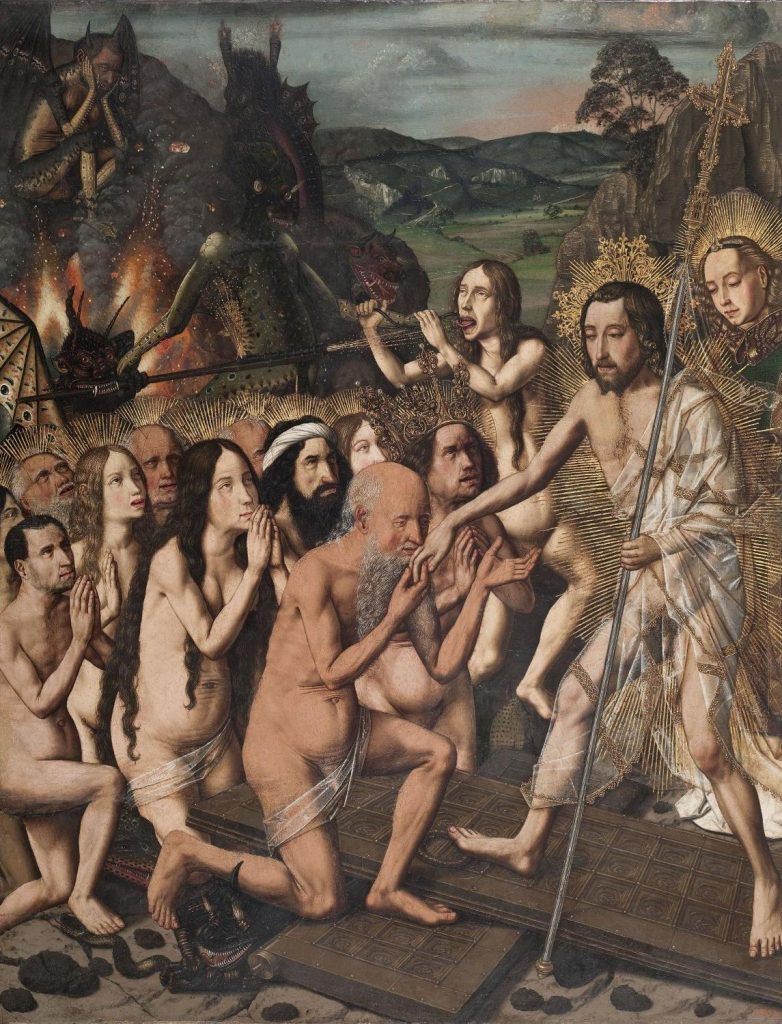
Bartolomé Bermejo,
Descent of Christ into Limbo,
circa 1474-1479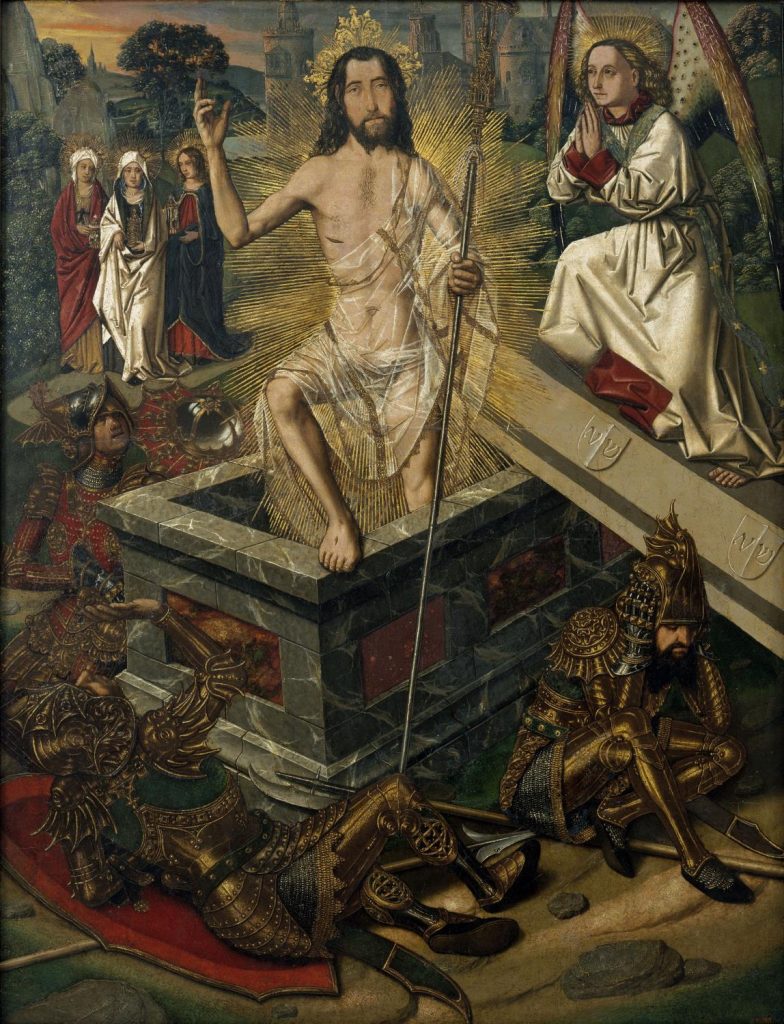
Bartolomé Bermejo,
Resurrection
circa 1474-1479
The other two, Entrance into Paradise and vision of the Crucified and Ascension, are a long-term loan by the Fundació Institut Amatller d’Art Hispànic (Barcelona), as a result of an agreement signed to mark the opening of the new Renaissance and Baroque galleries, in January 2018.

Bartolomé Bermejo, Entrance into Paradise and vision of the Crucified
circa 1474-1479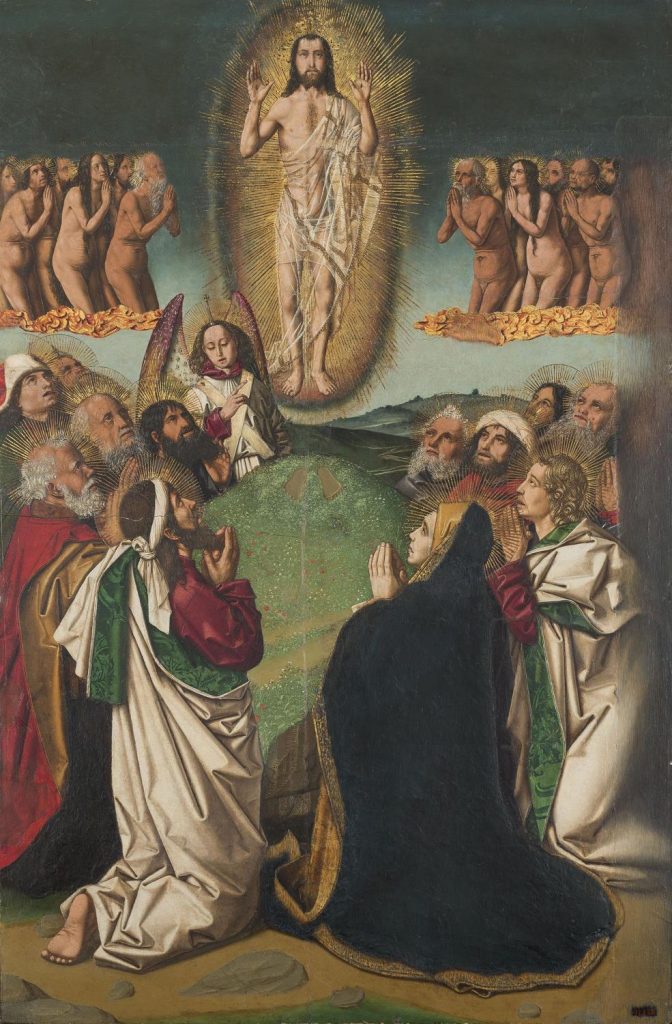
Bartolomé Bermejo,
Ascension,
circa1474-1479
Until 19 May, all four are on display in the exhibition Bermejo, a Fifteenth-century Rebel Genius
Four panels and a host of unanswered questions
Since they came to light at the beginning of the last century, these panels have aroused great interest for their undeniable artistic attractiveness, and also for the many enigmas that surround them. Questions as important as the chronology and the place they were painted, the original site and the subsequent ones where they were displayed, or the group of paintings to which they originally belonged, are still open to conjecture. The material study of the paintings has made it possible, however, to propose an answer to this last question and dispel many of the doubts around the questions that we have asked.
In the early twentieth century, the panels came to Barcelona from Paris and were sold, separately, to two collections in the city. The journey was accompanied by the revelation of one of the most important secrets that up to then they had been concealing: their authorship. The politician and historian Salvador Sanpere i Miquel, who had acted as the middleman in their sale, attributed them to Bermejo on the basis of comparing them to the works that were then already known by the artist from Córdoba. The proposal, promptly accepted by other specialists of the period, has remained fully valid to the present day, despite the fact that, as in so many other cases, it has been impossible to prove it from any documents.
Since then studies have helped us to learn more about the paintings, especially their unusual subject matter. Other questions were nevertheless left unanswered and it was not until the beginning of the twenty-first century that a particularly relevant fact, relative to the original group, was obtained. In 2003, Santiago Alcolea noted that the panels had been constructed from boards arranged horizontally and, therefore, as is the case with Gothic altarpieces in the Crown of Aragon, they must have formed the predella of an altarpiece. The detail, based on the visual analysis of the group, put an end to a series of earlier hypotheses that had interpreted the paintings as parts of the main body of an altarpiece.
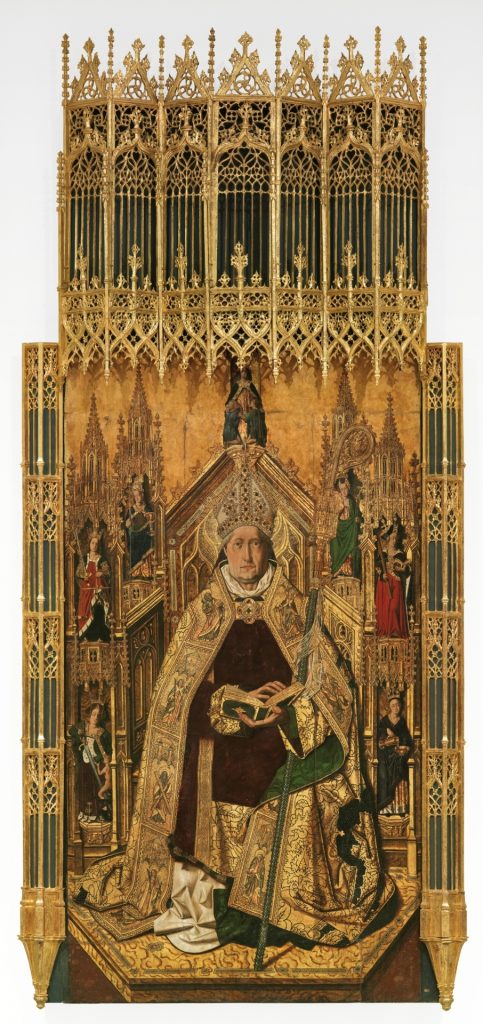
Saint Dominic of Silos enthroned as a Bishop ,
circa 1474-1479.
© Museo Nacional del Prado
However, which altarpiece by Bermejo did they belong to? There are two main hypotheses still on the table:
- They are part of the predella of the high altarpiece in the church of Santo Domingo de Silos, in Daroca, of which the central panel and a lateral one are conserved in the Museo del Prado, as well as another lateral compartment in a private collection
- They are part of the predella of the unknown altarpiece from the chapel of the merchant Juan Loperuelo, in the Franciscan friary in Daroca.
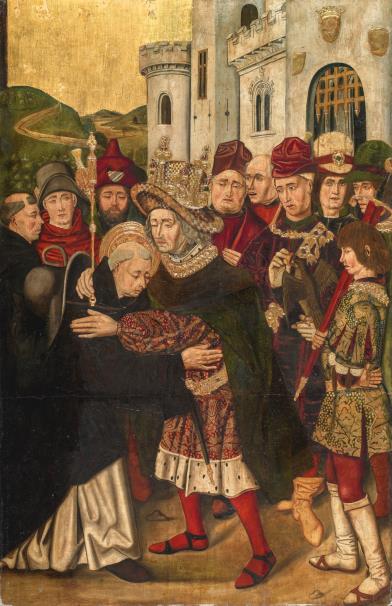
Bartolomé Bermejo and Martín Bernat,
Ferdinand I of Castile welcoming Saint Dominic of Silos , 1474-1479.
© Museo Nacional del Prado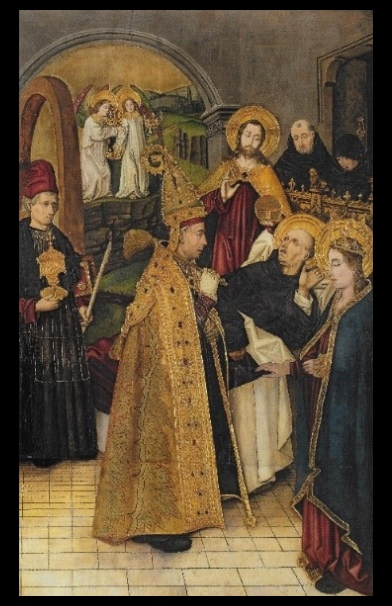
Bartolomé Bermejo and Martín Bernat,
Mort de Santo Domingo de Silos,
circa 1474-1479.
Private collection
The first hypothesis, upheld by Francesc Ruiz, is based on the structural compatibility of the panels with the recorded plan of the altarpiece; it also puts forward iconographical links between the predella and the main body of the group. The second one, put forward recently by Fernando Marías, highlights the thematic appropriateness of the panels for a context that was funerary, Franciscan and converso (converted Jewish) in origin, perhaps Loperuelo’s private chapel.
The material study and the answers to some of the enigmas posed
The material study of the panels carried out in the Museu Nacional d’Art de Catalunya, based, among other evidence, on radiographic examination, has enabled us to restore the structure of the predella that they had originally formed. In it, the four scenes, now separate, were placed together two by two (Descent of Christ in Limbo–Christ in Paradise; Resurrection–Ascension) forming two panels that must have flanked a central tabernacle. The trace of the iron nails, which held the reinforcing crosspieces on the back, shows that they were arranged diagonally, in a Saint Andrew’s Cross shape, on each of the two panels.

Reconstruction of the original structure of the predella of Christ the Redeemer. By Àngels Comella. Radiografies: À. Comella, V. Martí, À. Masalles; Diagram: À. Comella.
Red: holes of the iron nails that held the eliminated crosspieces
Yellow: area where the boards were joined
Green: lost metallic elements that joined the boards
Blue: modern metallic elements that joined the sawn fragments
Brown: original crosspieces that reinforced the panels, which were eliminated and replaced by a parquetage
But even more important is the fact that the material evidence seems to confirm the identification of the panels with the predella in the altarpiece of Santo Domingo de Silos.

They all have characteristics in common: both the central panel with the titular saint enthroned, and the others, are of pine wood, they have hemp applied and were constructed in a similar way with boards joined together at the sides, reinforced with metal pins.
The wooden supports of the predella were extended, in height at least, as were the surviving panels of the main body of the group. This fact, moreover, coincides with what, according to the documents, happened with the Silos altarpiece. The two scenes owned by the museum lost the top part of the pictorial composition that corresponds to this extension of the support, while those in the Institut Amatller have kept it and are therefore taller.
Finally, two of the pieces of the predella and the side panels of the body of the altarpiece experienced the same vicissitudes at relatively recently dates: for example, they were sawn and the resulting pieces joined together again using metal elements, the reinforcing crosspieces arranged in an X- cross were removed from the back, the thickness of the wood was reduced, and it was consolidated with a parquetage of similar characteristics in all of them. In short, too many coincidences to have happened by chance.
The identification of the panels of Christ the Redeemer as the compartments of the predella of the documented altarpiece of Santo Domingo de Silos implicitly provides an answer to many of the enigmas posed at the beginning. Besides offering an approximate date for the group, between 1474 and 1479, it establishes that it was made during Bermejo’s Aragonese period, which explains the success of some of his compositions in that territory’s painting.

Martín Bernat, Resurrection, late 15th century
(Formerly in the collection of the Duchess of Parcent)
Private collection
Martín Bernat, Ascension, late 15th century
(Formerly in the collection of the Duchess of Parcent)
Private collection
Related links
Bermejo, a Fifteenth-century Rebel Genius
Bartolomé Bermejo. Museo del Prado
Mireia Mestre and
Àrea d’Art Medieval







